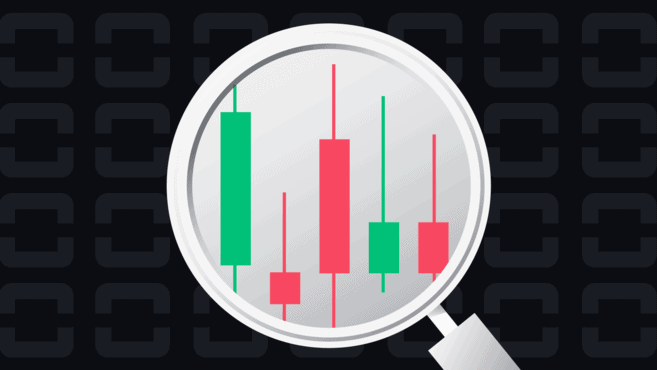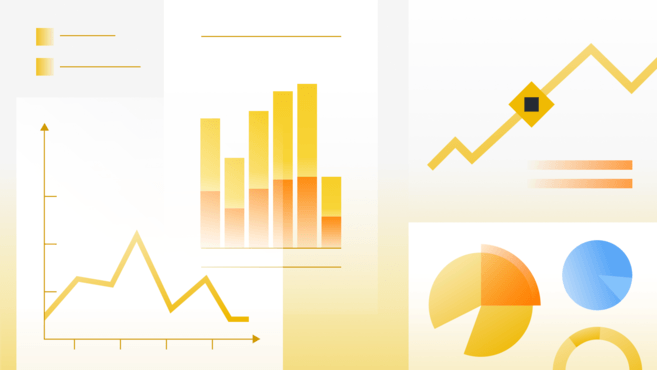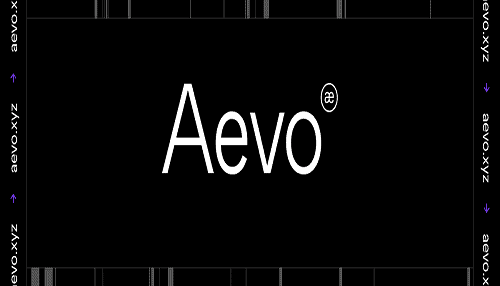What Is Fundamental Analysis (FA)?

Fundamental analysis (FA) is to an investor what technical analysis is to a trader. Those interested in long-term value appreciation rather than short-term profits might consider FA, which teaches you how to assess the fair value of a coin.
Picking the proper one in a market with over 5,000 assets to select from may seem to be a life-long search. New tokens come and go, and there is no way of knowing which ones will endure the test of time. One could imagine that investing in a cryptocurrency other than Bitcoin or Ethereum is akin to playing the lottery, but is this true?
Introduction
Trading assets as volatile as cryptocurrencies requires some skill. Choosing a strategy, comprehending the huge world of trading, and mastering technical and fundamental analysis are all activities that need practice.
Some skill in technical analysis might be inherited from the legacy financial markets. Many cryptocurrency traders use the same technical indicators that are used in Forex, stock, and commodity trading. Tools such as the RSI, MACD, and Bollinger Bands attempt to forecast market behavior regardless of the item being traded. As a result, these technical analysis tools are immensely popular in the bitcoin community.
Although the technique employed in cryptocurrency fundamental research is similar to that used in legacy markets, you can’t actually utilize tried-and-tested methodologies to evaluate crypto assets. To perform good FA in cryptocurrency, we must first understand where their value comes from.
In this post, we’ll look at measurements that may be utilized to create your own indicators.
What is fundamental analysis?
Investors and traders use a technique known as fundamental analysis to try to determine the true worth of a company or an asset. They will conduct in-depth analyses of both the company’s internal and external elements to arrive at an appropriate valuation of the asset or business in issue and to decide whether it is overpriced or undervalued. Their findings may then be used to assist improve the formulation of a strategy that will more likely than not result in profitable returns.
For instance, if you were interested in a certain firm, you may first investigate its profits, balance sheets, financial statements, and cash flow to get a sense of how healthy its finances are. After that, you may go back out to a broader perspective and examine the market or industry that the company is a part of. Who are the other competing businesses? Which age groups does the firm want to appeal to? Is it extending the scope of its operations? You may zoom out even farther to take into account the economic issues, such as interest rates and inflation, to mention just a handful of the aspects that come into play.
The method described above is an example of what is referred to as a bottom-up strategy. In this method, you begin with a firm that piques your interest and work your way up to grasp its significance in the larger economy. You may also use a top-down method, which involves narrowing down your choices by first looking at the wider picture. This is another viable option.
The completion of this sort of study should result in the generation of a forecasted share price, which should then be compared to the price at which the stock is now trading. It’s possible that you’ll get to the conclusion that it’s overpriced if the figure is lower than the present price. If the price is lower than the current market price, you may presume that it is now being sold at an excessively high price. You are now armed with the information from your study, which enables you to make educated judgments on whether to purchase or sell the shares of that specific firm.
Fundamental analysis (FA) vs. technical analysis (TA)
Traders and investors who are new to the stock market, foreign exchange, or cryptocurrency markets sometimes struggle to choose the best strategy to use. Both the fundamental analysis and the technical analysis are two distinct approaches to analyzing various aspects of the same object that depend on considerably different procedures. Despite this, both sources provide data that may be used in trading. So, which one do you recommend?
In fact, it may make more sense to inquire as to what each participant brings to the table. An idea that forms the basis of fundamental analysts’ investing judgments is the conviction that the price of a company does not necessarily reflect the stock’s actual worth.
On the other hand, technical analysts are of the opinion that future price movement may be forecast to some extent based on the price action and volume data of the past. They do not worry themselves with the examination of external issues, opting instead to concentrate on price charts, patterns, and trends in market conditions. Their goal is to locate the best possible spots at which to enter and leave positions.
It is difficult to regularly beat the market through technical analysis, according to supporters of the efficient market hypothesis (EMH), which states that markets are perfectly efficient. According to this hypothesis, financial markets already take into consideration previous data and accurately reflect all of the knowledge that is currently available about the assets that are traded on them (they are rational). The EMH, in its “weaker” variants, does not cast doubt on basic analysis; nevertheless, in its “stronger” forms, it argues that it is difficult to achieve a competitive advantage, even with extensive study.
Understandably, there is no objectively superior technique out of the two, since each might give significant information into distinct areas. It’s possible that some are more suited to specific trading methods than others, but in fact, most traders use a blend of the two in order to get a better grasp on the wider picture. This is something to keep in mind while making long-term investments as well as short-term deals.
The problem with crypto fundamental analysis
It is not possible to evaluate cryptocurrency networks using the same standards that are used to regular enterprises. The more decentralized services, like as Bitcoin (BTC), are, if anything, closer to commodities. However, even with more centralized cryptocurrencies (such as those issued by organizations), standard financial indicators are not able to tell us very much about the state of the market.
Therefore, we have to shift our focus to a variety of different frameworks. The first thing that has to be done in this procedure is to locate reliable measurements. When we talk about powerful systems, we mean ones that aren’t readily gamed. For instance, given it is simple to establish false accounts or purchase interaction on social media, the number of followers on Twitter or the number of users on Telegram or Reddit are probably not useful measures.
It is essential to keep in mind that there is no one metric that can provide us with a comprehensive picture of the network that we are evaluating. When we take a look at the number of active addresses that are stored on a blockchain, we can notice that their number has been steadily rising. However, it does not teach us very much on its own. To the best of our knowledge, it might be an independent actor moving money around between themselves using a rotating series of different addresses each time.
In the following sections, we will examine three types of crypto FA metrics: on-chain metrics, project metrics, and financial metrics. On-chain metrics refer to metrics that are stored directly on the blockchain. This list will not be complete, but it should provide a solid groundwork for the later development of indicators that may be used to measure progress.
On-chain metrics

Obtaining the required data via applications programming interfaces (APIs) or websites that have been created expressly for the goal of shedding light on investment choices is a simpler and more direct approach. For example, CoinMarketCap’s on-chain analysis of Bitcoin gives us a myriad of information. Additional sources include Coinmetrics’ Data Charts or Binance Research’s project reports.
Transaction count
The number of transactions that take place on a network is an excellent indicator of the activity level of that network. We are able to examine how activity varies over time by charting the number over specific periods of time (or by using moving averages), respectively.
Take into account that this measure must to be evaluated with extreme care. Similar to active addresses, there is no way for us to know for certain whether or not a single entity is the only one moving cash between their own wallets in order to artificially exaggerate the amount of on-chain activity.
Transaction value
Active addresses
Active addresses are any addresses on a blockchain that are currently being used within a certain time period. There are a variety of ways to calculate this, but one of the more common methods is to count both the sender and the recipient of each transaction over a certain time period (e.g., days, weeks, or months). Some people also look at the overall number of unique addresses over an extended period of time, which is known as a cumulative analysis.
Fees paid
The need for block space may be inferred from the fees that are paid, which may be of more significance for some cryptocurrencies than others. Users compete against one another to get their transactions included in a timely way, therefore we may think of them as bids at an auction. Those that place greater bids will get their transactions validated (mined) more quickly, but those who place smaller bids will have to wait for a longer period of time.
This is an excellent indicator to investigate if you are interested in cryptocurrencies whose emission timetables are going down. The primary Proof of Work (PoW) blockchains each provide a reward for completing a block. In certain cases, it is composed of a block subsidy as well as fees for transactions. The block subsidy is reduced on a regular basis (during events such as the Bitcoin halving, for example).
It seems to reason that transaction fees would need to go up over time if mining costs are expected to gradually grow while at the same time the block subsidy is being gradually scaled down. If this were not the case, miners would be forced to operate at a loss and would eventually disconnect from the network. This has a domino effect on the level of protection provided by the chain.
Hash rate and the amount staked
These days, blockchains make use of a wide variety of consensus algorithms, each of which has its own set of processes. In light of the fact that they play such an important part in the protection of the network, delving into the data that surrounds them could be fruitful for doing basic research.
In Proof of Work (PoW) cryptocurrencies, the hash rate is often employed as a measurement of the overall health of the network. When the hash rate of a cryptocurrency gets greater, it becomes more difficult to carry out a 51% attack effectively. On the other hand, a growth over time may also indicate a greater interest in mining, which is likely the outcome of lower overhead costs and increased earnings. On the other hand, a decline in the hash rate is indicative of “miner capitulation,” which is when miners stop contributing hashes to the network because it is no longer lucrative for them to do so.
To mention just a few, the current price of the asset being mined, the total number of transactions being completed, and the fees that are being paid are all factors that have the potential to affect the overall expenses of mining. Naturally, other crucial factors to take into account include the direct expenses of mining, such as the cost of energy and computer power.
Another idea that is linked to mining that uses game theory in a similar way is staking, which is used in Proof of Stake, for example. However, the way that it operates in terms of the mechanics is different. The fundamental premise is that users will stake their own holdings in order to take part in the block validation process. As a result, we could evaluate interest based on the total amount wagered at any particular point in time (or lack of it).
Project Metrics

Whereas on-chain metrics are concerned with data that is viewable on the blockchain, project metrics entail a qualitative approach. This method looks at aspects such as the success of the team (if any exists), the whitepaper, and the impending plan.
The whitepaper
Prior to making any investments, it is strongly suggested that you read the whitepaper for the project in question. This is a technical paper that outlines the cryptocurrency project for us and provides us with an overview. A good whitepaper should define the goals of the network, and ideally give us an insight into:
- The technology used (is it open source?)
- The use case(s) it aims to cater to
- The roadmap for upgrades and new features
- The supply and distribution scheme for coins or tokens
It is a good idea to compare and contrast this information with the talks that have been had about the project. What are some other people’s thoughts on the matter? Is there anything that should raise a red flag? Do the objectives seem to be achievable?
The team
What does the development community look like if there is no team to work with? If the project uses a public version of GitHub, you should investigate the number of people contributing to it as well as the level of activity. One currency whose repository hasn’t been updated in more than two years may not be as enticing as another coin whose development has been ongoing and consistent.
Competitors
A good whitepaper ought to provide us an understanding of the use case that the cryptocurrency asset is targeting, and it should do this in some way. At this point, it is essential to identify the projects with which it is in direct competition as well as the old infrastructure that it intends to replace.
In a perfect world, the investigation of these essential aspects should be equally as rigorous. It’s possible that an asset, when seen in isolation, might seem to be enticing; nevertheless, when the same indications are applied to other crypto assets, it may become clear that ours is weaker than the others.
Tokenomics and initial distribution
Some initiatives develop tokens in the hopes of finding an issue that they can solve. It is not meant to imply that the project as a whole is not feasible; instead, the use of the token that is linked with it may be limited in this setting. As a result, it is essential to establish whether or not the token has any actual use. And by extension, whether that utility is something that the larger market will perceive, and if so, how much it is likely to value the utility at if it does identify it.
In this regard, the manner in which the money were allotted at the outset is another essential aspect to take into consideration. Have people been able to earn it by mining, or was it through an ICO or IEO? In the first scenario, the whitepaper has to detail how much of the funding will be reserved for the company’s founders and personnel, as well as how much would be made accessible to investors. In the second scenario, we may seek for proof that the asset’s creator has been premining, which is mining on the network before the feature is officially released.
Concentrating on the distribution could provide us with some insight into the danger that is there. For instance, if just a few parties held the great majority of the supply, we may come to the conclusion that this is a hazardous investment because those parties would someday be able to influence the market. If this were the case, we might come to this conclusion.
Financial metrics

When doing fundamental research, it is helpful to have information such as how the asset is being traded at the moment, what price it has been trading at in the past, information on the asset’s liquidity, and so on. However, additional intriguing measures that can come under this category include those that address the economics and incentives of the crypto asset’s protocol. These metrics can be particularly useful for analyzing the value of a cryptocurrency.
Market capitalization
The market capitalization (also known as network value) may be determined by multiplying the current price by the total quantity that is currently in circulation. In essence, it reflects the potential cost of acquiring each and every unit of the cryptocurrency asset that is currently for sale (assuming no slippage).
Simply looking at a company’s total market value might be deceiving. In principle, it should not be difficult to issue a token that serves no purpose and has a supply of 10 million copies. If each of those tokens were exchanged for a single dollar, the total market capitalization would amount to ten million dollars. This valuation is plainly skewed; in the absence of a compelling value proposition, it is quite improbable that the broader market would show interest in the token.
In a same vein, it is not feasible to ascertain with absolute certainty the quantity of a particular cryptocurrency or token that is currently in circulation.
Coins can be burned, keys can be lost, and funds can simply be forgotten about. Instead, we observe approximations that make an effort to eliminate coins that are no longer being produced or used in circulation.
Nevertheless, market capitalization is used to a significant degree in order to determine the expansion potential of networks. When compared to “large-cap” coins, “small-cap” ones are seen by some crypto investors as having a greater potential for expansion. Others argue that large-cap companies have higher network effects and, as a result, have a better chance of success than small-cap companies that are just starting out.
Liquidity and volume
The ease with which an asset may be purchased or sold is referred to as its liquidity. An asset is considered to be liquid if it could be sold at its current market price without much difficulty. The idea of a liquid market, which refers to a competitive market that is saturated with requests and bids (resulting in a smaller bid-ask spread), is connected to this idea.
Because of the illiquidity of the market, there is a possibility that we may be unable to sell our assets at a price that we consider to be “fair.” This informs us that there are no buyers that are eager to make the transaction, so we have two options: either we can drop the ask price or we can wait for the liquidity to improve.
The volume of trades is an indication that might assist us in determining the liquidity of the market. It may be measured in a few different ways, and its purpose is to demonstrate the amount of value that has been transferred within a certain amount of time. Usually, charts will represent the total volume of daily trade (denominated in native units or in dollars).
In the context of fundamental analysis, having a working knowledge of liquidity might prove to be beneficial. In the end, it serves as a measure of the interest that the market has in a potential investment opportunity.
Supply mechanisms
Decisions may be influenced by the maximum supply, the circulating supply, and the rate of inflation. Some currencies gradually restrict the quantity of new units they create, which makes them appealing to investors who anticipate that demand for new units will exceed supply in the future.
On the other side, some investors may feel that a limit that is strictly enforced would be detrimental to their portfolios in the long term. One of these issues might be that it reduces the incentive for people to spend the money or tokens by giving them the option to hoard them instead. Another argument against it is because it gives disproportionately more benefits to early adopters, while a policy of consistent inflation would be more equitable toward newcomers.
Closing thoughts
Fundamental analysis, when carried out properly, has the potential to reveal crucial insights into cryptocurrencies, but technical analysis is unable to do so. When it comes to trading, having the ability to differentiate between the “real” worth of a network and its market price is a valuable talent to have. There are, of course, certain things that can be revealed to us by TA that cannot be anticipated using FA. Because of this, many traders in today’s market use a strategy that combines the two.
As is the case with a great deal of methods, there is no playbook for FA that is universally applicable.




















